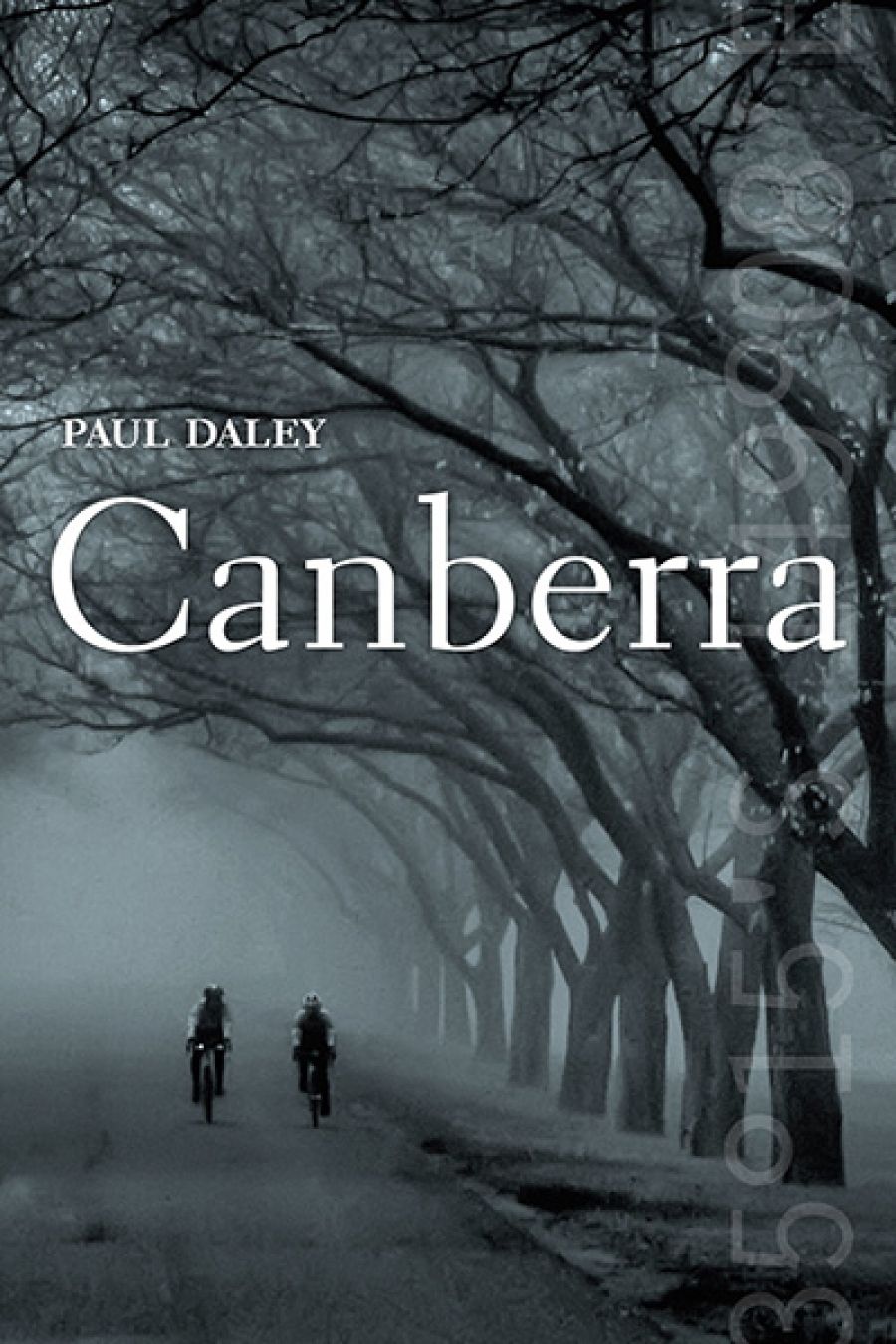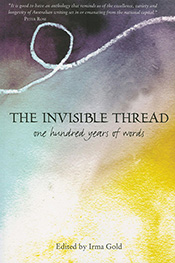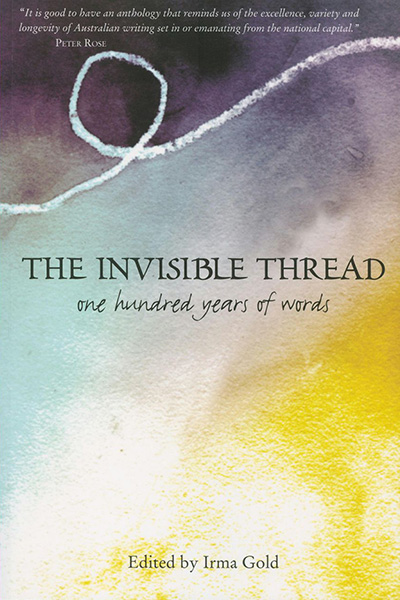
- Free Article: No
- Contents Category: Canberra
- Review Article: Yes
- Online Only: No
- Custom Highlight Text:
Canberra leads a double life: by day the federal capital, crafting legislation and performing on the world stage; at night it is transformed into a suburban neighbourhood where people cook their meals and pay their bills and water their gardens. But a pervasive view of Canberra is that it is the home only of public servants on secondment; that it is just a waste of a good sheep paddock. This is a stereotype in which I was instructed pretty much as soon as I arrived in Australia in the early 1990s. On my first visit to Canberra I saw exactly what I had been schooled to see: low-rise buildings emanating a dull power; orderly but sparsely populated streets. Not until moving here at the end of the 1990s did I come to know the quotidian nature of the town, the disorder lurking just below the bureaucratic structures, and the raffish, dreamy quality that is a remnant of Walter Burley Griffin’s adulterated plans.
- Book 1 Title: Canberra
- Book 1 Biblio: NewSouth, $29.99 hb, 325 pp, 9781742233185
- Book 2 Title: The Invisible Thread: One Hundred Years of Words
- Book 2 Cover Small (400 x 600):

- Book 2 Cover (800 x 1200):

- Book 2 Cover Path (no longer required): images/stories/issues/350_April_2013/Thumbnails/invisible-thread.jpg
This year marks Canberra’s hundredth birthday, and under the guidance of the inimitable Robyn Archer it is throwing a year-long party, not just to have a good time but also to reposition Canberra in the eyes of the nation. The two books reviewed here contribute to the centenary celebrations, Paul Daley’s Canberra offering a biography of the town, and Irma Gold’s The Invisible Thread a compilation of works by authors who have a connection to Canberra. Daley’s work begins (after a short personal prologue) with the biblical phrase ‘In the beginning’, and proceeds in a mostly chronological fashion from prehistory, through the late nineteenth and early twentieth centuries, to 2012 and the Gillard–Rudd leadership stand-off. Gold’s collection starts with an extract of C.E.W. Bean’s account of World War I, and ends with Marion Halligan’s moving piece on viewing Bonnard through the lens of her recent widowhood.
Paul Daley is a journalist by trade, well respected for his reportage on both foreign and national affairs. He has lived in Canberra for two decades, so can be trusted to know his way around. But political reportage and narrative prose are different domains of writing. To my mind, this book does not always successfully negotiate the differences. Although the historical and political elements are well researched and intrinsically interesting, I found it difficult to know whose story was being told, or to find the connective tissue that is needed to knit a series of elements into a coherent account.
The richest parts of the book, for me, were the most personal: Daley is at his best when writing about his own life in, and in relation to, Canberra. The scenes that depict him walking his dog through Red Hill, or looking out across the limestone plains, evoke the environment richly, sensually. In these passages, and those that locate his family in the story of the town, he achieves presence, image, and a quality of writing that brings Canberra sharply into focus.
The bigger-picture sections lose narrative traction. There are brief and aleatory vignettes of the early actors on the Canberra stage: the traditional owners of this country; the early convicts, officials, and settlers; various individuals buried in St John’s graveyard. Daley writes of people who married other people, people who committed all sorts of crimes, who drank too much, died too young, died too old. There are too many people mentioned, and too little is told about them – about their relationship to the land, to each other, or to the dream of a possible future. Many of the names are familiar, because they are now also the names of Canberra suburbs: Ainslie, Campbell, Palmer, Crace. But most of the individuals in this account emerge from history as mere fragments, as the brief lives Michel Foucault described, those who are found only in ‘a few lines or a few pages, nameless misfortunes and adventures, gathered together in a handful of words’. The problem with this approach is that it becomes difficult to develop an understanding of the people in their time and place, or to establish any empathy with them.
There are more extended accounts of the process of selection of the area for the proposed national capital, and the formation of this city in legislation and in discourse. But later in the book, when Daley returns to the flickering approach to describe conversations he held with local historians, long-term residents, or the descendants of those early settlers, the story again loses traction. Their place in Canberra is stated, but insufficiently shaped; their words are presented, but insufficiently engaged. This allows few insights into the validity of their points of view, and reduces the complex story of Canberra to a few individual perceptions, not always coherently connected. The kaleidoscope occasionally resolves into a recognisable picture, but then it dissolves again into a new series of fleeting narratives, of brief lives.
The kaleidoscope is present again in Irma Gold’s collection of writings, but, because this is an anthology rather than an extended work, here it is less distracting, more successful. This is a collection of short pieces and fragments, one that weaves together poems, short stories, and novel extracts, reportage, history, and science. The fragments included in this volume were previously published, which is often a good strategy for anthologists, meaning they can draw on work that has already been through a peer-review and an editorial process. The collection is sometimes uneven, but its overall quality is high: testament not only to the quality of the writing, but also to the insights of the editors.
I should confess that nearly half of the authors and editors represented in this book are my friends, acquaintances, colleagues, or students. But if I am necessarily invested in the book by virtue of my personal networks, my personal views about the value of a regional literature, or about celebrations of historical events, mean I am sufficiently divorced from the logic of the book to allow an objective reading of it. Nor (to remain, for the moment, curmudgeonly) does its title resonate for me: to my mind there is no thread, visible or invisible, except the one that is spun in the process of the selection and juxtaposition of individual segments, and then in the production and launch of the book. After all, though all the contributors have some connection to Canberra, that connection is often transitory; and the works themselves are, more often than not, set elsewhere – in Israel, Ireland, the Western Front, Gallipoli, all over Europe, in the United States, Changi, and even in the world of fantasy. I find it difficult to identify David Brooks, or Blanche d’Alpuget, as Canberra writers, though both are certainly writers who have spent some time in Canberra. So the logic of selection seems a bit strained; and the effect for me is that the anthology does not so much trace as spin a thread of ‘Canberra writing’, and having spun it, weaves it into what is often a captivating collection.
The writers included here range from the famous dead (Miles Franklin, A.D. Hope, Judith Wright) through the equally famous living (Les Murray, Marion Halligan, Kate Grenville), to those with a more local readership. Regardless of their literary profile, virtually all the authors have compelling voices, and the capacity to tell a story, elucidate a moment of history, or craft images in words. There are many individual jewels, some of them familiar to me, some new. Many of the fragments were so absorbing that I was propelled off the couch and into my study, or down to the library, to find the whole from which it had been extracted, needing to read more.
Despite my ambivalence about Daley’s Canberra, I found that each of these books offers many exquisite moments; each also makes clear that Canberra is considerably more than the Parliamentary Triangle, more than the national cultural institutions, more than popular accounts of the city. It is a living place with its own histories, and it has its own stories to tell.


Comments powered by CComment